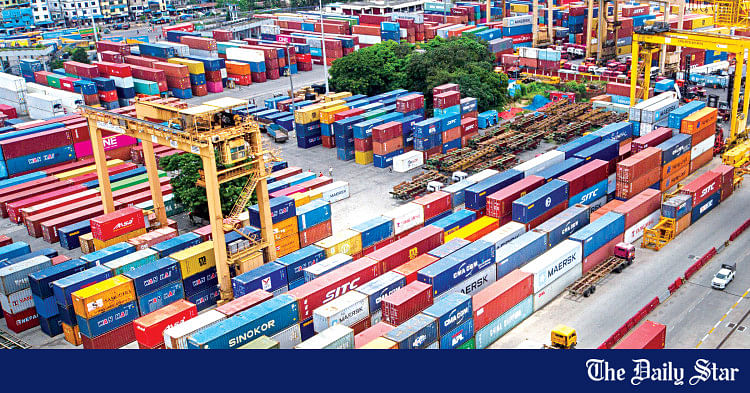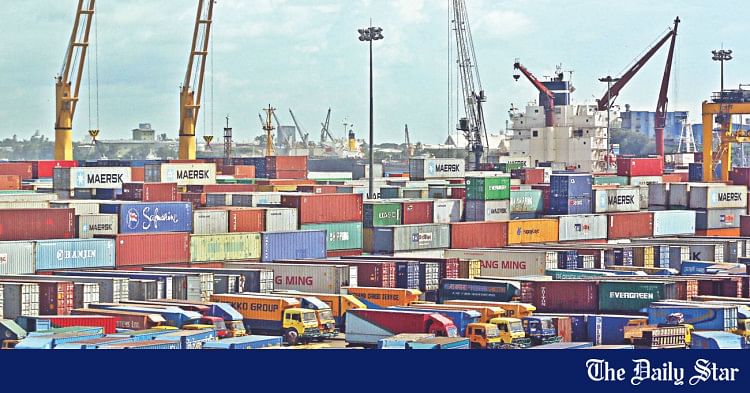Saif
Senior Member
- Joined
- Jan 24, 2024
- Messages
- 15,898
- Likes
- 7,990
- Nation

- Axis Group


Ministry opts to hand over New Mooring Container Terminal to CPA
The authorities have decided in principle to let the Chittagong Port Authority (CPA) take charge of the New Mooring Container Terminal (NCT) for six months amid opposition from major political parties to appointing a foreign operator.
Ministry opts to hand over New Mooring Container Terminal to CPA

Currently, a private operator is running the New Mooring Container Terminal, the largest terminal at Chattogram port. Its contract will expire on July 6. Photo: RAJIB RAIHAN
The authorities have decided in principle to let the Chittagong Port Authority (CPA) take charge of the New Mooring Container Terminal (NCT) for six months amid opposition from major political parties to appointing a foreign operator.
Currently, a private operator is running the NCT, the largest terminal at Chattogram port. Its contract will expire on July 6.
With the deadline nearing, the Ministry of Shipping held a meeting last Wednesday where it decided in principle to hand over operations to the CPA, according to an official document.
Subsequently, the CPA has sought final approval from the Cabinet Committee on Economic Affairs through the shipping ministry.
In a letter, the CPA pointed to the contract's looming expiry, the lengthy process of selecting a new operator, and the need to keep external trade running smoothly. It urged swift approval in the national interest.
The NCT has been making headlines in recent months over who would run it.
The government said that bringing in a well-known foreign operator would increase the overall efficiency of the port.
But parties including the BNP, Jamaat-e-Islami, and left-leaning groups oppose the idea, arguing that giving control of a key terminal to a foreign firm would endanger national security and sovereignty.
Port workers have also been protesting, saying the move would make little economic sense as the terminal is "profitable and fully functional".
Built at a cost of Tk 2,000 crore, the 950-metre terminal was completed in 2007 by the CPA.
It has five jetties — four for ocean-going container ships and one for smaller vessels that connect to Pangaon port in Dhaka.
The Daily Star approached top CPA officials for comment, but to no avail.
CPA spokesperson and acting secretary Md Nasir Uddin did not answer repeated phone calls.
Currently, a private operator is running the New Mooring Container Terminal, the largest terminal at Chattogram port. Its contract will expire on July 6. Photo: RAJIB RAIHAN
The authorities have decided in principle to let the Chittagong Port Authority (CPA) take charge of the New Mooring Container Terminal (NCT) for six months amid opposition from major political parties to appointing a foreign operator.
Currently, a private operator is running the NCT, the largest terminal at Chattogram port. Its contract will expire on July 6.
With the deadline nearing, the Ministry of Shipping held a meeting last Wednesday where it decided in principle to hand over operations to the CPA, according to an official document.
Subsequently, the CPA has sought final approval from the Cabinet Committee on Economic Affairs through the shipping ministry.
In a letter, the CPA pointed to the contract's looming expiry, the lengthy process of selecting a new operator, and the need to keep external trade running smoothly. It urged swift approval in the national interest.
The NCT has been making headlines in recent months over who would run it.
The government said that bringing in a well-known foreign operator would increase the overall efficiency of the port.
But parties including the BNP, Jamaat-e-Islami, and left-leaning groups oppose the idea, arguing that giving control of a key terminal to a foreign firm would endanger national security and sovereignty.
Port workers have also been protesting, saying the move would make little economic sense as the terminal is "profitable and fully functional".
Built at a cost of Tk 2,000 crore, the 950-metre terminal was completed in 2007 by the CPA.
It has five jetties — four for ocean-going container ships and one for smaller vessels that connect to Pangaon port in Dhaka.
The Daily Star approached top CPA officials for comment, but to no avail.
CPA spokesperson and acting secretary Md Nasir Uddin did not answer repeated phone calls.







































